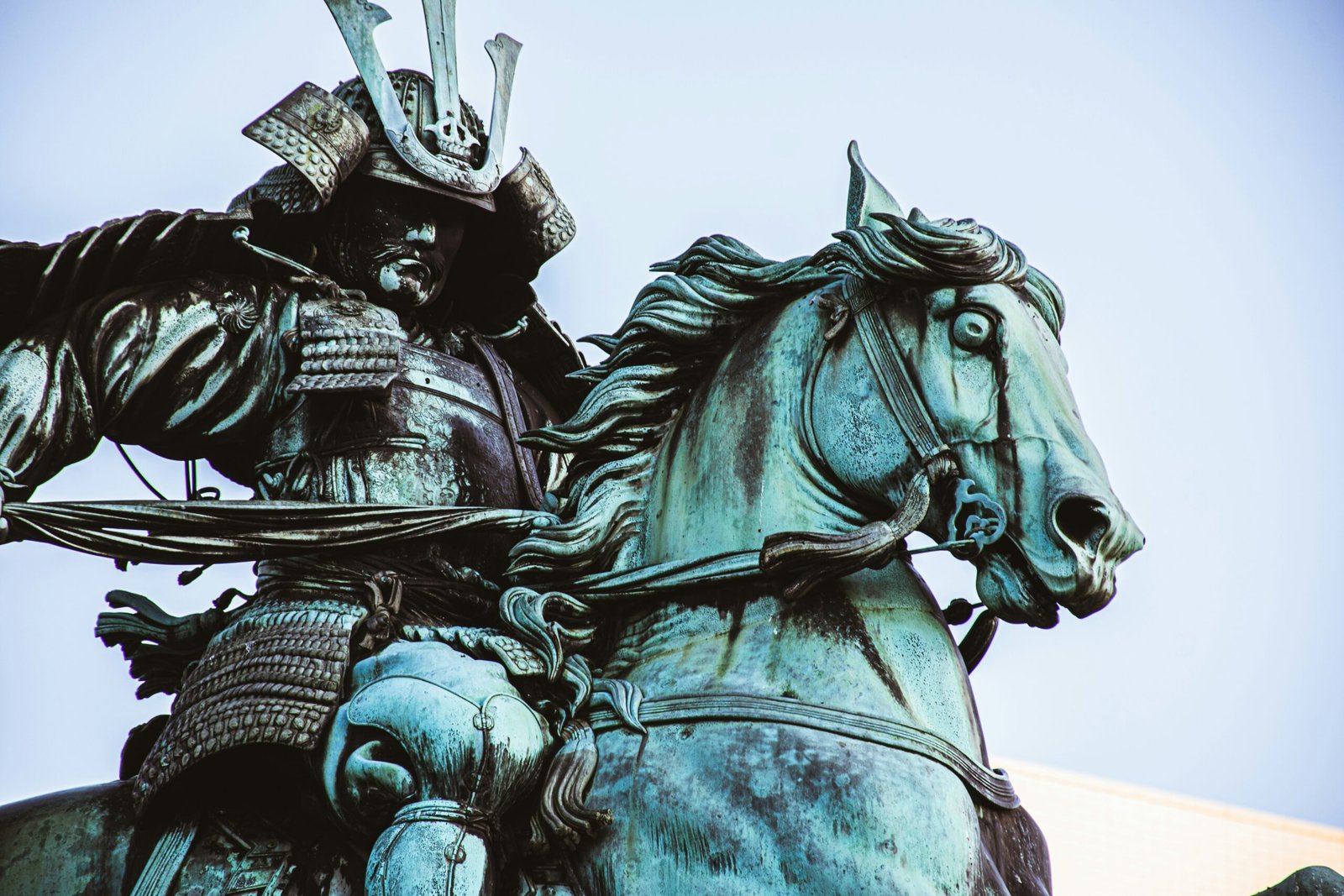The samurai warriors of feudal Japan are often depicted as the epitome of martial prowess and strict discipline. Emerging as a distinct class during the late Heian period (794-1185), the samurai initially served as provincial warriors before gaining prominence as the ruling military class by the Kamakura period (1185-1333). These warriors played a pivotal role in shaping Japanese history, politics, and culture over several centuries.
Samurai were not merely warriors; they were also landowners, bureaucrats, and scholars. Their influence extended beyond the battlefield to the very fabric of Japanese society. At the core of the samurai’s ethos was the Bushido code, a complex set of principles emphasizing honor, loyalty, and courage. Bushido, often translated as “the way of the warrior,” dictated every aspect of a samurai’s life, guiding their actions and decisions. This code fostered a culture of discipline and ethical behavior, which earned samurai both fear and respect from allies and adversaries alike.
The historical context in which samurai rose to prominence is marked by periods of intense conflict and political upheaval. Feudal Japan was characterized by a fragmented political landscape, where regional lords, known as daimyo, competed for power and influence. This constant state of warfare necessitated a warrior class capable of both defending and expanding territorial claims. Samurai warriors were the linchpin of these efforts, their skills honed through rigorous training and battlefield experience.
Fear and respect were intrinsic to the samurai’s identity. Their formidable skills in martial arts, mastery of weaponry, and unwavering adherence to Bushido made them formidable adversaries. Stories of their exploits and duels often became legends, further amplifying their mystique. As we delve into the individual stories of the most feared samurai warriors, it is essential to understand this foundational context. These warriors were not merely fighters; they were embodiments of a complex and deeply ingrained cultural ideal that commanded both awe and reverence.
Miyamoto Musashi: The Invincible Ronin
Miyamoto Musashi is widely considered Japan’s greatest swordsman, a master strategist whose life and achievements continue to captivate the imagination. Born in 1584 in the Harima Province, Musashi was a prodigious talent from a young age. His first duel at the age of 13 marked the beginning of an undefeated record that spanned over 60 duels, showcasing his unparalleled skill and tactical genius.
Musashi’s combat style was revolutionary. He developed the Niten Ichi-ryū, or “Two Heavens as One” style, which is characterized by its use of two swords simultaneously. This innovative approach gave him a significant advantage in duels and on the battlefield, allowing for both offensive and defensive maneuvers with remarkable fluidity. His style was not just a product of physical prowess but also of deep strategic thinking, honed through relentless practice and real combat experience.

Beyond his martial exploits, Musashi was also a profound philosopher and writer. His most famous work, ‘The Book of Five Rings,’ is a seminal text on strategy, tactics, and philosophy. Written in 1645, this treatise delves into the principles of combat and the mindset of a warrior. It is divided into five books: Earth, Water, Fire, Wind, and Void, each representing different elements of his strategic thinking. ‘The Book of Five Rings’ remains a cornerstone in the study of martial arts and strategy, influencing not only samurai culture but also modern disciplines such as business and leadership.
Musashi’s legacy extends beyond his undefeated record and literary contributions. He is an enduring symbol of the samurai spirit, embodying the virtues of skill, discipline, and strategic acumen. His life story has inspired countless works of literature, film, and art, ensuring that the legend of Miyamoto Musashi continues to thrive in Japanese culture and beyond.
Tomoe Gozen: The Fearless Female Samurai
Tomoe Gozen stands out as a remarkable figure in the annals of samurai history, primarily due to her unique status as a female samurai during the late Heian period. Renowned for her beauty, strength, and unwavering courage, Tomoe’s story is intricately linked to the Genpei War (1180–1185), a conflict between the Taira and Minamoto clans that shaped the future of Japan. Unlike most women of her time, who were relegated to the private sphere, Tomoe Gozen defied societal norms to emerge as a notable warrior.
Tomoe served under Minamoto no Yoshinaka, a prominent leader of the Minamoto clan. Her prowess in battle was legendary; she was reputed to be an excellent swordswoman and a master of archery. Among her most famous exploits was her participation in the Battle of Awazu in 1184, where she is said to have fought valiantly, demonstrating her martial skills and tactical acumen. According to the “The Tale of the Heike,” an epic account of the Genpei War, Tomoe was “especially beautiful, with white skin, long hair, and charming features. She was also a remarkably strong archer, and as a swordswoman, she was a warrior worth a thousand, ready to confront a demon or a god, mounted or on foot.”

Despite her extraordinary abilities, Tomoe Gozen faced considerable challenges as a female warrior in a predominantly male-dominated society. Her very existence in the annals of samurai lore is a testament to her overcoming the gender barriers of her time. In a society where women’s roles were largely confined to the domestic sphere, Tomoe’s achievements in the battlefield were nothing short of revolutionary. Her life has since been enveloped in a shroud of myths and legends, further cementing her place in Japanese cultural history.
The legends surrounding Tomoe Gozen often blur the lines between historical fact and folklore. Some tales suggest she continued to fight after the Genpei War, while others propose that she took on a different identity, possibly becoming a nun. Regardless of the veracity of these accounts, Tomoe Gozen’s legacy endures, symbolizing the exceptional courage and capability of women in the samurai era.
Oda Nobunaga: The Ambitious Warlord
Oda Nobunaga, one of Japan’s most formidable samurai warlords, rose to prominence during the turbulent Sengoku period. As a powerful daimyo, Nobunaga’s ambition and ruthless strategies set him apart from his contemporaries. His journey to power began with his control over the Owari Province, which he inherited at a young age. Demonstrating exceptional military acumen, Nobunaga swiftly expanded his territory by defeating rival clans through a combination of strategic alliances and relentless combat.
Nobunaga’s innovative military tactics played a significant role in his success. He was one of the first Japanese leaders to incorporate firearms into his army’s arsenal, recognizing the transformative potential of these weapons. This foresight was evident in the Battle of Nagashino in 1575, where his forces decimated the Takeda cavalry using a combination of arquebus volleys and defensive fortifications. Such groundbreaking tactics not only secured his victories but also changed the landscape of Japanese warfare.

In his quest to unify Japan, Nobunaga employed a series of ruthless strategies, exemplified by the infamous Siege of Mount Hiei in 1571. Determined to crush the militant Tendai Buddhist monks who opposed him, he ordered the complete destruction of their stronghold, resulting in the massacre of thousands. This brutal act served as a stark warning to other potential adversaries and underscored Nobunaga’s determination to consolidate power by any means necessary.
Nobunaga’s leadership had a profound impact on Japanese history. His efforts laid the groundwork for the eventual unification of Japan, which was later completed by his successors Toyotomi Hideyoshi and Tokugawa Ieyasu. Despite his untimely death in 1582, caused by the betrayal of one of his own generals, Akechi Mitsuhide, Nobunaga’s legacy endured. He is remembered as a visionary leader whose ambition and innovative tactics reshaped Japan’s political and military landscape.









